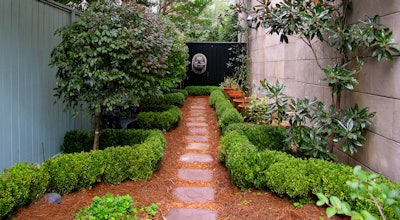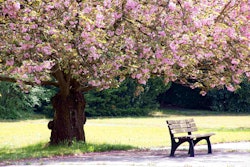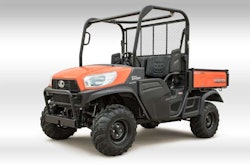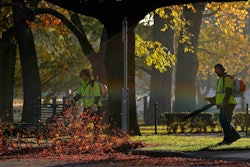 Photo: karol m/Flickr
Photo: karol m/FlickrWhen interacting with a customer who has big dreams but a small landscape, it can be tough to keep them upbeat about the possibilities in store.
Whether you’re dealing with a smaller backyard garden, a cramped suburban yard or an almost non-existent city apartment yard, there is one very simple method you can introduce that will help: sightlines.
Sightlines in a landscape are clear paths that direct your eye to a specific focal point in the area. When used correctly, sightlines not only help draw the eye to the more attractive elements of a landscape, they can also help the space look larger than it actually is.
To find out more about creating sightlines to give your customer’s yard the look of a much bigger space, check out the following tips.
Line windows up with garden view, take a look around outside
The first step of this process is to start inside the house and work your way out.
Look at all of the rooms in your customer’s home to find out which rooms they spend the most time in, and take a look at what the garden looks like in each of these favored rooms.
If there is a clear shot of the garden from the living room, consider adding in a focal point where your eye naturally falls when looking out the window. Be sure to keep the area between the focal point and the window clear for easy viewing at all times.
When choosing what the focal point will be, the possibilities are pretty numerous. A potted plant or container, a shrub, benches or urns or even a specimen tree can act as a beautiful focal point without causing you much of a headache with searching for unattainable items.
For customers with small gardens or small living spaces, creating and placing emphasis on a sightline from the inside to the outside will help give your customers the feel and look of a much larger space with less hassle. For customers that may live in tighter quarters in the city or have windows that face walls of neighboring buildings, having a sightline that is matched up closely to what can be seen through the doorways or windows is important. Try playing around with different potted plant options, as well as the scale of these pots and plants, to create more focal points that will be where the eye naturally falls.
Once your adventure moves from indoors to out, be sure to look the space over in every direction.
Note the plethora of views beyond the garden and take stock of where the eye is naturally drawn within the landscape, even if it’s something as simple as being able to see a mature tree canopy in the area across from your customer’s home, a certain area of the garden or a patch of open sky between the trees.
To really capitalize on the natural views, create sightlines by making defined pathways, garden beds and other open areas to draw the eye. Keep overgrown plants cut back to expose more expansive areas to help pathways act as a second sightline.
Linear features, expansive views and tree alignment
When you have straight lines running away from you in a landscape, it acts to draw the eye forward. Take advantage of this to make a visual stretch in a space by aligning linear features along a sightline.
If there are any pathways laid out in a straight line, these are also easy to use as linear features. Take this opportunity to capitalize on the sightlines present since it’s typical that the center of the walkway will be kept clear.
If you are taking advantage of walkways, don’t forget to have an object placed at the end of the walk so the eye is drawn down the path and to an endpoint.
If your customers have a garden that opens up into a roomy space, be sure to keep plants low. This will help emphasize a sightline that will lead outside the garden. Hedges, walls, fences and other similar structures can be used to help frame a particular view.
If your customer has the space for it, consider taking advantage of trees. Aligning trees on either side of a walkway is a classic design that goes with almost any region or setting, and it can be fairly simple to arrange.
This pathway creates a new sightline, and when a longer line of trees is added in, it can create a more dramatic effect.
Defining an axis and appreciating the view
When you have the chance to lay out a garden along a central axis, it helps create a sightline down the axis, and it gives you the option of adding in lateral sightlines when the paths cross the central axis. Designate a clear center by incorporating roughly symmetrical hedges on the sides of the axis to help clearly define it as a sightline.
Once the task of creating this surplus of sightlines has come to completion, don’t forget to add in a designated space or two that allows your customers to simply sit back and enjoy what you’ve created.
Placing a bench or chairs at either the start or end of a sightline is the perfect way to let your customers enjoy the view and take in the unique view the specific sightline gives them.










